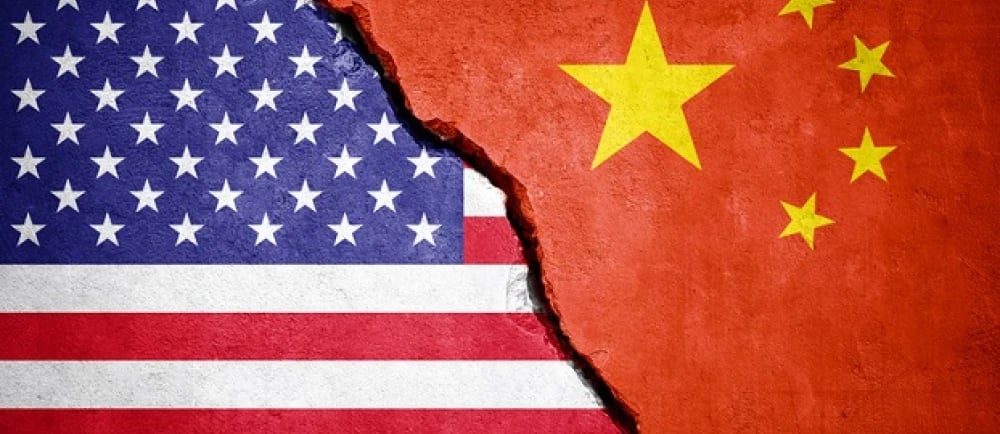China: Sino-American Tensions and the Geopolitics of Biopharma Supply Chains
With legislation like the BIOSECURE Act and China's revised Anti-Espionage Law, the pharmaceutical industry grapples with reshoring efforts, diversification challenges, and the potential for critical drug shortages. Will this lead to a complete decoupling of pharmaceutical ties, or a strategic realignment that builds resilience while maintaining essential collaboration?
CHINAUNITED STATES
Raymond Puentes
6/10/20254 min read


A high degree of interdependence has been established between the pharmaceutical sectors of the United States and the People’s Republic of China. Between 2020 and 2022, drug products originating in China were imported into the United States at increasing levels, with values rising from $2.1 billion to $10.3 billion. Concurrently, U.S. exports to China of pharmaceutical inputs, including laboratory reagents and biologics, were valued at approximately $9.3 billion. A mutual reliance has been embedded within research, development, and production networks.
In April 2025, a national security investigation concerning pharmaceutical imports from China was initiated by the U.S. Department of Commerce under Section 232 of the Trade Expansion Act. This investigation followed the passage of the BIOSECURE Act in September 2024, through which federal agencies and contractors were prohibited from procuring services from specific Chinese life sciences firms, including WuXi AppTec and BGI, beginning in 2032. In response, tariffs of up to 125 percent were imposed by Chinese authorities on selected U.S. laboratory and diagnostic inputs. After shortages were reported by domestic hospitals in China, partial tariff rollbacks were implemented. Additionally, the scope of China’s Anti-Espionage Law was broadened in 2023, resulting in the reclassification of a wide range of scientific information as state secrets. Cross-border data exchange and pharmaceutical oversight activities have been affected by the revised legal framework.
Significant vulnerabilities have been identified in the pharmaceutical supply chain serving the United States. It has been estimated that approximately 75 percent of essential medicines consumed in the United States are imported. More than 500 generic products have been found to rely on single-country sources for active pharmaceutical ingredients. India, which supplies a majority of generic drugs to the U.S. market, continues to obtain nearly 80 percent of its APIs from China. Disruptions in Chinese exports would result in immediate constraints on Indian production. In a 2023 review conducted by the U.S. Senate Armed Services Committee, it was concluded that nearly 30 percent of the Department of Defense’s pharmaceutical procurement is sourced from China-based suppliers. Substitution alternatives were found to be limited or nonexistent in several cases.
Adverse consequences have also been associated with abrupt changes in supplier relationships. In one instance in 2023, contaminated eye drops were distributed in the U.S. market. Dozens of patients were affected, and one fatality was recorded. The products had been manufactured in India using ingredients sourced from Chinese firms. It was observed that accelerated supplier transitions contributed to reduced oversight and increased risk.
Various forms of operational restructuring have been undertaken in response to this environment. New manufacturing facilities have been developed by WuXi AppTec in Ireland and Massachusetts. Thermo Fisher Scientific reported logistical constraints after clinical samples from U.S. sources were declined by Chinese research institutions. Procurement modifications have been initiated by at least 17 Chinese firms, which sought to identify domestic alternatives to imported U.S. research materials. In the United States, a federal grant exceeding $350 million was awarded to Phlow Corporation for the purpose of expanding domestic antibiotic API capacity.
The reshaping of pharmaceutical supply infrastructure has been associated with high costs and extended timelines. Relocation of a complex biologic product to a new site typically requires six to eight years. Many smaller firms are unable to fund duplicative manufacturing operations. According to a 2024 industry survey, approximately 70 percent of U.S. biotechnology firms were found to depend on Chinese partners for at least one phase of their development or production activities. A 2025 risk assessment by Exiger indicated that inventories of common antibiotics in U.S. hospitals would be exhausted within 60 days in the event of a sudden halt in Chinese exports.
Additional regulatory burdens have emerged as a result of recent legislation. Under the Uyghur Forced Labor Prevention Act, the U.S. Customs and Border Protection agency has been authorized to detain shipments linked to components sourced from the Xinjiang region. Comparable requirements have been enacted in Canada and Germany, where pharmaceutical importers are now obligated to audit full upstream supply chains for ethical and legal compliance in addition to quality standards.
Coordinated responses have been developed among allied governments. Under the framework of the Quadrilateral Security Dialogue, a vaccine manufacturing initiative was established in India by the United States, Japan, Australia, and India. The program has aimed to produce one billion doses for the Indo-Pacific region. Financial incentives have been provided by the Japanese government to support the relocation of pharmaceutical production from China to Southeast Asia. Strategic stockpiles have been expanded by the European Union, and domestic production of generic antibiotics has been prioritized within the bloc’s pharmaceutical policy agenda.
The systemic nature of pharmaceutical manufacturing has created exposure to disruptions originating in a single geographic location. Delays at facilities in China have been shown to impact clinical trials, regulatory decisions, and medicine availability in unrelated jurisdictions. In response, dual-sourcing models and regionalized production strategies have been adopted for selected therapeutic categories, particularly oncology treatments and antimicrobials. Consumer health products with lower regulatory sensitivity have remained within globally distributed supply chains, subject to additional documentation and traceability requirements.
Institutional strategies have emphasized redundancy, risk diversification, and increased domestic capacity. Governments have allocated resources to supplier transparency, regulatory alignment, and allied industrial partnerships. The stabilization of pharmaceutical supply chains under conditions of political volatility has become a defined policy objective in several jurisdictions.
Continued access to essential medicines has depended on structural resilience, regulatory foresight, and coordination across national systems. These requirements have been incorporated into long-term planning efforts by both public authorities and private sector actors.
The interdependence that characterizes the pharmaceutical relationship between the United States and China has been shaped by economic efficiency, regulatory permissibility, and technological complementarity. However, this model has revealed persistent structural vulnerabilities when subjected to geopolitical or legal pressure. Current trends suggest that partial diversification, regulatory harmonization, and the localization of critical functions will continue to be prioritized by both state and corporate actors. While full disengagement from global supply chains remains infeasible in most therapeutic domains, selective redundancy and regional cooperation have been adopted as long-term risk mitigation strategies. The sustainability of pharmaceutical access under variable political conditions will depend on whether these structural adjustments can be institutionalized and financed at scale across diverse regulatory environments.


